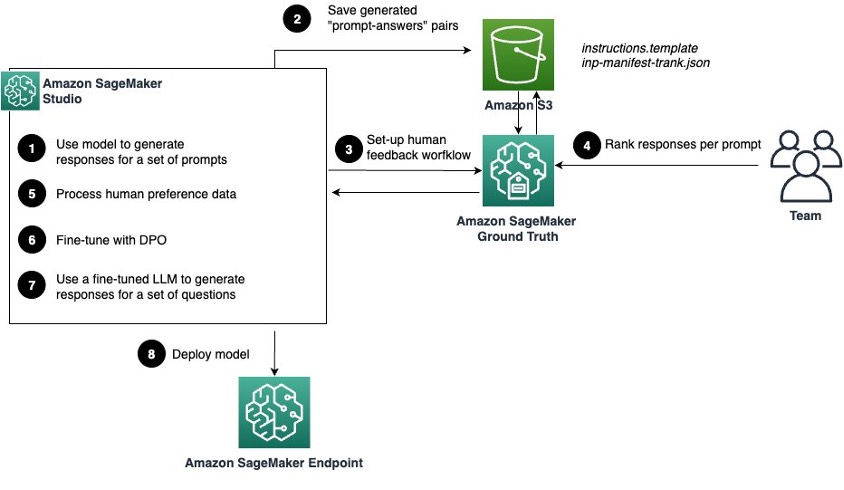AWS Machine Learning Blog
Category: Learning Levels
Best prompting practices for using Meta Llama 3 with Amazon SageMaker JumpStart
In this post, we dive into the best practices and techniques for prompting Meta Llama 3 using Amazon SageMaker JumpStart to generate high-quality, relevant outputs. We discuss how to use system prompts and few-shot examples, and how to optimize inference parameters, so you can get the most out of Meta Llama 3.
How healthcare payers and plans can empower members with generative AI
In this post, we discuss how generative artificial intelligence (AI) can help health insurance plan members get the information they need. The solution presented in this post not only enhances the member experience by providing a more intuitive and user-friendly interface, but also has the potential to reduce call volumes and operational costs for healthcare payers and plans.
Enabling production-grade generative AI: New capabilities lower costs, streamline production, and boost security
As generative AI moves from proofs of concept (POCs) to production, we’re seeing a massive shift in how businesses and consumers interact with data, information—and each other. In what we consider “Act 1” of the generative AI story, we saw previously unimaginable amounts of data and compute create models that showcase the power of generative […]
Introducing Amazon EKS support in Amazon SageMaker HyperPod
This post is designed for Kubernetes cluster administrators and ML scientists, providing an overview of the key features that SageMaker HyperPod introduces to facilitate large-scale model training on an EKS cluster.
A review of purpose-built accelerators for financial services
In this post, we aim to provide business leaders with a non-technical overview of purpose-built accelerators (PBAs) and their role within the financial services industry (FSI).
Genomics England uses Amazon SageMaker to predict cancer subtypes and patient survival from multi-modal data
In this post, we detail our collaboration in creating two proof of concept (PoC) exercises around multi-modal machine learning for survival analysis and cancer sub-typing, using genomic (gene expression, mutation and copy number variant data) and imaging (histopathology slides) data. We provide insights on interpretability, robustness, and best practices of architecting complex ML workflows on AWS with Amazon SageMaker. These multi-modal pipelines are being used on the Genomics England cancer cohort to enhance our understanding of cancer biomarkers and biology.
Align Meta Llama 3 to human preferences with DPO, Amazon SageMaker Studio, and Amazon SageMaker Ground Truth
In this post, we show you how to enhance the performance of Meta Llama 3 8B Instruct by fine-tuning it using direct preference optimization (DPO) on data collected with SageMaker Ground Truth.
How Vidmob is using generative AI to transform its creative data landscape
In this post, we illustrate how Vidmob, a creative data company, worked with the AWS Generative AI Innovation Center (GenAIIC) team to uncover meaningful insights at scale within creative data using Amazon Bedrock.
Ground truth curation and metric interpretation best practices for evaluating generative AI question answering using FMEval
In this post, we discuss best practices for working with Foundation Model Evaluations Library (FMEval) in ground truth curation and metric interpretation for evaluating question answering applications for factual knowledge and quality.
Evaluating prompts at scale with Prompt Management and Prompt Flows for Amazon Bedrock
In this post, we demonstrate how to implement an automated prompt evaluation system using Amazon Bedrock so you can streamline your prompt development process and improve the overall quality of your AI-generated content.









